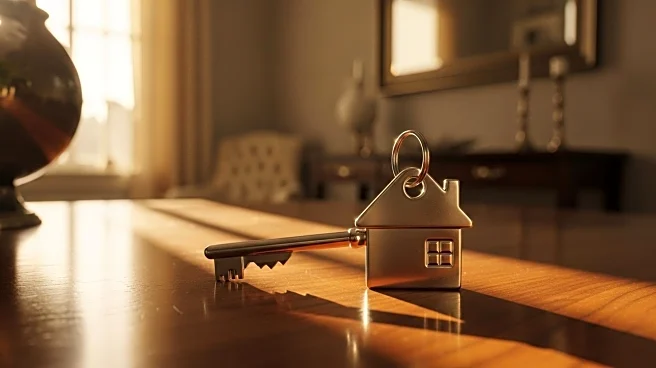What's Happening?
The trend in the U.S. housing market is shifting towards smaller homes, as affordability issues prompt buyers to maximize space and forgo traditional features like formal dining rooms and walk-in pantries. According to the National Association of Realtors, the median home size has decreased to 2,210 square feet from 2,500 square feet in 2015. This shift is driven by changing demographics, including more single and child-free home buyers, as well as retirees looking to downsize. Builders are responding to this demand by constructing smaller homes, which are more affordable and cater to first-time buyers. The market for homes priced between $200,000 and $350,000 has grown significantly, although bidding wars in certain areas, such as Washington, D.C., make entry challenging for new buyers.
Why It's Important?
The move towards smaller homes reflects broader economic and demographic shifts in the U.S. housing market. As affordability becomes a critical issue, smaller homes offer a viable solution for many buyers, including younger generations and retirees. This trend could lead to increased homeownership rates among first-time buyers and those seeking to downsize, potentially stabilizing the housing market. However, the high demand and limited supply in certain regions may exacerbate competition, impacting lower-income buyers. The shift also suggests a change in consumer priorities, with buyers valuing functionality and affordability over size and luxury.
What's Next?
As the demand for smaller homes continues, builders may increasingly focus on developing affordable housing options to meet market needs. Real estate agents and developers might explore opportunities in renovating existing smaller homes to cater to this growing segment. Additionally, policymakers could consider measures to address affordability challenges, such as incentives for building smaller homes or support for first-time buyers. The ongoing trend may also influence urban planning and zoning regulations, encouraging more efficient use of space in residential areas.
Beyond the Headlines
The shift towards smaller homes may have cultural implications, as traditional features like formal dining rooms become less common. This change could reflect evolving lifestyles and values, with a focus on practicality and sustainability. The trend might also impact the real estate industry, prompting innovation in home design and construction techniques to maximize space and efficiency. Long-term, this could lead to a reevaluation of what constitutes a 'dream home,' with smaller, more functional spaces becoming increasingly desirable.










